The cashew kernel market plays a crucial role in the global nut industry and has been experiencing significant growth in recent years. Cashew nuts are consumed worldwide and are known for their nutritional value, unique taste, and versatile applications in various culinary creations. This article aims to provide a comprehensive summary of the cashew kernel market, its current trends, challenges faced by the industry, and potential opportunities for future growth. Market Size and Key Players: The global cashew kernel market has witnessed substantial growth in recent years, fostering a competitive landscape among key players. According to recent research, the market is projected to reach a value of USD 20.2 billion by 2026, exhibiting a compounded annual growth rate (CAGR) of 7.9% from 2021 to 2026. India, Vietnam, and Cote d’Ivoire are the leading cashew producers and exporters, contributing significantly to the global market. These countries dominate production due to their favorable climatic conditions and extensive cashew cultivation. Additionally, other countries such as Brazil, Tanzania, Nigeria, and Mozambique have also emerged as notable cashew producers, contributing to the increasing global supply. Demand Drivers and Market Trends: 1. Increasing Health Consciousness: The rising awareness about the nutritional benefits of cashew kernels, such as their high protein, fiber, and healthy fat content, has significantly contributed to the increasing demand. Cashew kernels are considered a healthy snack due to their good cholesterol-inducing properties, making them a preferred choice among health-conscious consumers. 2. Rising Disposable Income: Economic growth and increasing disposable income levels across various regions have added to the demand for cashew kernels. As consumers have more purchasing power, they are willing to spend on premium food products, including high-quality cashew kernels. This trend particularly boosts demand in emerging economies. 3. Shift towards Organic and Natural Products: In recent years, there has been a growing preference among consumers for organic and natural food products. This shift in consumer behavior has prompted manufacturers to provide organic and pesticide-free cashew kernels, further propelling market growth. 4. Diversification in Consumption Patterns: Cashew kernels are not only consumed as standalone snacks but are also used extensively in the food and beverage industry. They are used in bakery products, confectionery, ready-to-eat meals, cereals, desserts, and nut butter, among others. The versatility of cashew kernels has expanded their market penetration and demand. Challenges Faced by the Cashew Kernel Industry: 1. Supply Chain Issues: The cashew kernel industry faces several supply chain challenges, including transportation, storage, and quality control. A significant portion of cashew production is carried out in remote and underdeveloped regions, which complicates logistics and affects the overall quality and freshness of the produce. 2. Price Volatility: Cashew kernel prices are sensitive to several factors, including climatic conditions, market demand, and currency fluctuations. Price volatility affects both producers and manufacturers, making it challenging to maintain consistent profitability. 3. Quality Control: Ensuring consistent quality and meeting global standards remain challenges for many cashew-producing regions. Efforts to improve quality control and certification processes are essential to enhance market competitiveness and global acceptance. 4. Sustainability and Social Responsibility: The cashew industry must address sustainability concerns, such as deforestation, water scarcity, and fair labor practices. Companies investing in sustainable practices gain a competitive edge and ensure long-term viability in the industry. Opportunities for Growth and Expansion: 1. Increasing Consumption in Emerging Markets: Emerging economies, such as China, India, and Brazil, present significant growth opportunities as their populations become more aware of cashew kernels and their nutritional benefits.
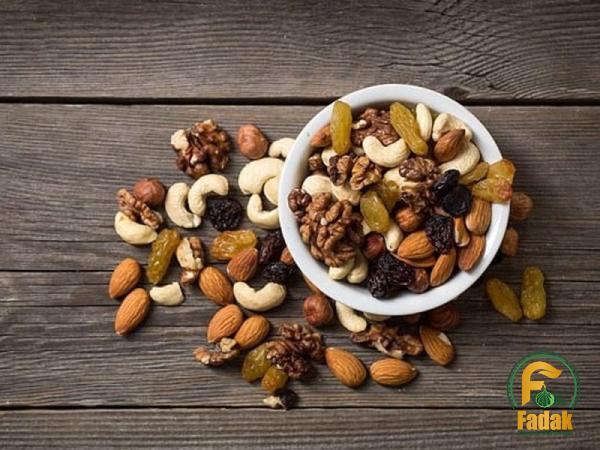
nut
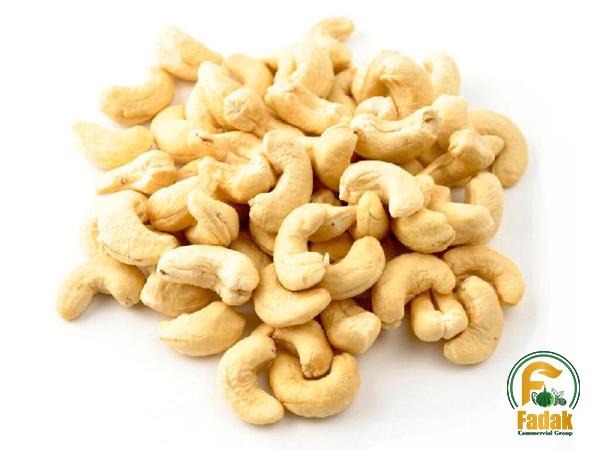 Expanding marketing efforts and creating awareness about the versatility and health benefits of cashew kernels in these markets can drive consumption. 2. Product Innovation: Developing value-added products, such as flavored cashew kernels, roasted variants, and cashew-based snacks, can attract a broader consumer base. The trend towards healthier snacking options presents an opportunity for manufacturers to introduce innovative cashew-based products. 3. Expansion of Distribution Channels: Improving distribution networks and partnering with local retailers and e-commerce platforms can help reach untapped markets. Leveraging e-commerce platforms for online sales and direct-to-consumer models can further expand market reach. 4. Sustainable Farming Practices: Adopting sustainable farming practices, including agroforestry techniques and efficient water management, can enhance crop yields while minimizing the environmental impact. Incorporating fair labor practices and promoting social responsibility can also be a differentiating factor for companies. Conclusion: The cashew kernel market is witnessing significant growth, driven by increasing consumer awareness about its nutritional benefits and rising disposable income levels. Despite challenges in the supply chain, price volatility, and quality control, the industry holds ample opportunities for growth and expansion. Capitalizing on emerging markets, product innovation, expanding distribution channels, and adopting sustainable practices will be key for cashew kernel market players to thrive in this competitive landscape.1. Market Segmentation: The cashew kernel market can be segmented based on product type, end-use applications, and region. In terms of product type, the market is divided into whole cashew kernels, broken cashew kernels, and cashew kernel pieces. Whole cashew kernels are in high demand due to their premium quality and appearance, while broken and piece kernels are utilized in the food processing industry for various applications. By end-use applications, the market can be categorized into the food and beverage industry, the confectionery industry, the bakery industry, and the snack industry. Cashew kernels find extensive applications in these sectors due to their rich flavor, texture, and versatility. Moreover, cashew kernels are also gaining popularity in the vegan and plant-based food industry as a substitute for dairy products. Regionally, the market can be divided into North America, Europe, Asia Pacific, Latin America, and the Middle East and Africa. The Asia Pacific region, led by India and Vietnam, dominates the global cashew kernel market in terms of production and consumption. North America and Europe are significant importers of cashew kernels, while Latin America and Africa are emerging as prominent cashew-producing regions. 2. Competitive Landscape: The cashew kernel market is highly competitive, with several key players vying for market share. Some of the prominent companies operating in this space include Olam International, Agrocel Industries, DW Group, Global Vietnam Cashew, and Agro Products Exporter. These companies focus on expanding their product portfolios, improving quality control measures, and adopting sustainable practices to maintain a competitive edge. Mergers and acquisitions are also common strategies utilized by companies to strengthen their market position. For instance, in 2018, Olam International acquired Macao-based confectionery company ADMAC to integrate its cashew operations and expand into the confectionery segment. 3. Regional Outlook: a) Asia Pacific: Asia Pacific, led by India and Vietnam, dominates the cashew kernel market. India is the largest exporter of cashew kernels, accounting for a significant share in the global market. The country’s favorable climate and extensive cultivation make it a key player in the industry.
Expanding marketing efforts and creating awareness about the versatility and health benefits of cashew kernels in these markets can drive consumption. 2. Product Innovation: Developing value-added products, such as flavored cashew kernels, roasted variants, and cashew-based snacks, can attract a broader consumer base. The trend towards healthier snacking options presents an opportunity for manufacturers to introduce innovative cashew-based products. 3. Expansion of Distribution Channels: Improving distribution networks and partnering with local retailers and e-commerce platforms can help reach untapped markets. Leveraging e-commerce platforms for online sales and direct-to-consumer models can further expand market reach. 4. Sustainable Farming Practices: Adopting sustainable farming practices, including agroforestry techniques and efficient water management, can enhance crop yields while minimizing the environmental impact. Incorporating fair labor practices and promoting social responsibility can also be a differentiating factor for companies. Conclusion: The cashew kernel market is witnessing significant growth, driven by increasing consumer awareness about its nutritional benefits and rising disposable income levels. Despite challenges in the supply chain, price volatility, and quality control, the industry holds ample opportunities for growth and expansion. Capitalizing on emerging markets, product innovation, expanding distribution channels, and adopting sustainable practices will be key for cashew kernel market players to thrive in this competitive landscape.1. Market Segmentation: The cashew kernel market can be segmented based on product type, end-use applications, and region. In terms of product type, the market is divided into whole cashew kernels, broken cashew kernels, and cashew kernel pieces. Whole cashew kernels are in high demand due to their premium quality and appearance, while broken and piece kernels are utilized in the food processing industry for various applications. By end-use applications, the market can be categorized into the food and beverage industry, the confectionery industry, the bakery industry, and the snack industry. Cashew kernels find extensive applications in these sectors due to their rich flavor, texture, and versatility. Moreover, cashew kernels are also gaining popularity in the vegan and plant-based food industry as a substitute for dairy products. Regionally, the market can be divided into North America, Europe, Asia Pacific, Latin America, and the Middle East and Africa. The Asia Pacific region, led by India and Vietnam, dominates the global cashew kernel market in terms of production and consumption. North America and Europe are significant importers of cashew kernels, while Latin America and Africa are emerging as prominent cashew-producing regions. 2. Competitive Landscape: The cashew kernel market is highly competitive, with several key players vying for market share. Some of the prominent companies operating in this space include Olam International, Agrocel Industries, DW Group, Global Vietnam Cashew, and Agro Products Exporter. These companies focus on expanding their product portfolios, improving quality control measures, and adopting sustainable practices to maintain a competitive edge. Mergers and acquisitions are also common strategies utilized by companies to strengthen their market position. For instance, in 2018, Olam International acquired Macao-based confectionery company ADMAC to integrate its cashew operations and expand into the confectionery segment. 3. Regional Outlook: a) Asia Pacific: Asia Pacific, led by India and Vietnam, dominates the cashew kernel market. India is the largest exporter of cashew kernels, accounting for a significant share in the global market. The country’s favorable climate and extensive cultivation make it a key player in the industry.
Specifications of nut
 However, Vietnam has emerged as a strong competitor due to its efficient processing capabilities and competitive pricing. Other countries in the region, such as Indonesia and Thailand, are also witnessing growth in cashew production and exports. b) North America: North America is a prominent consumer and importer of cashew kernels. The region’s strong demand is driven by the rising popularity of healthy snacks and the incorporation of cashew kernels in various food and beverage applications. The United States is the largest market in the region, with consumers increasingly opting for organic and natural cashew kernel products. The growing vegan and plant-based food industry in North America also contributes to the demand for cashew kernels as a dairy substitute. c) Europe: Europe is another significant importer of cashew kernels. The region’s demand is driven by the increasing awareness of the health benefits associated with cashews, as well as the demand for high-quality nuts in the food industry. Germany, the United Kingdom, and France are among the prominent markets in Europe. European consumers also demonstrate a preference for ethically sourced and sustainably produced cashew kernels, driving companies to focus on incorporating sustainable practices in their supply chains. d) Latin America and the Middle East and Africa: Latin America and the Middle East and Africa regions are emerging as significant players in the cashew kernel market. Countries such as Brazil, Cote d’Ivoire, Tanzania, and Mozambique are witnessing increased cashew production and export volumes. These regions offer favorable climatic conditions for cashew cultivation, contributing to their growing presence in the global market. Additionally, the Middle East region, particularly the United Arab Emirates, is a major re-exporter of cashew kernels, catering to the demand of neighboring countries. 4. Government Initiatives and Regulations: Government initiatives and regulations play a crucial role in shaping the cashew kernel market. For instance, in India, cashew cultivation and processing receive support from various government programs and subsidies to promote agricultural development and increase farmer income. The Vietnam Cashew Association (VINACAS) in Vietnam works closely with the government to boost cashew production, improve processing facilities, and ensure quality control. In terms of regulations, various countries have set standards for cashew kernel imports to ensure food safety and quality. The Food Safety and Standards Authority of India (FSSAI) regulates the quality, labeling, and packaging of cashew kernels to maintain the integrity of products consumed domestically and exported internationally. Stringent regulations regarding pesticide usage, traceability, and labeling are becoming increasingly important for market players to comply with. 5. Impact of COVID-19: The cashew kernel market was not immune to the impacts of the COVID-19 pandemic. The global lockdown measures disrupted supply chains, affecting the availability and distribution of cashew kernels.
However, Vietnam has emerged as a strong competitor due to its efficient processing capabilities and competitive pricing. Other countries in the region, such as Indonesia and Thailand, are also witnessing growth in cashew production and exports. b) North America: North America is a prominent consumer and importer of cashew kernels. The region’s strong demand is driven by the rising popularity of healthy snacks and the incorporation of cashew kernels in various food and beverage applications. The United States is the largest market in the region, with consumers increasingly opting for organic and natural cashew kernel products. The growing vegan and plant-based food industry in North America also contributes to the demand for cashew kernels as a dairy substitute. c) Europe: Europe is another significant importer of cashew kernels. The region’s demand is driven by the increasing awareness of the health benefits associated with cashews, as well as the demand for high-quality nuts in the food industry. Germany, the United Kingdom, and France are among the prominent markets in Europe. European consumers also demonstrate a preference for ethically sourced and sustainably produced cashew kernels, driving companies to focus on incorporating sustainable practices in their supply chains. d) Latin America and the Middle East and Africa: Latin America and the Middle East and Africa regions are emerging as significant players in the cashew kernel market. Countries such as Brazil, Cote d’Ivoire, Tanzania, and Mozambique are witnessing increased cashew production and export volumes. These regions offer favorable climatic conditions for cashew cultivation, contributing to their growing presence in the global market. Additionally, the Middle East region, particularly the United Arab Emirates, is a major re-exporter of cashew kernels, catering to the demand of neighboring countries. 4. Government Initiatives and Regulations: Government initiatives and regulations play a crucial role in shaping the cashew kernel market. For instance, in India, cashew cultivation and processing receive support from various government programs and subsidies to promote agricultural development and increase farmer income. The Vietnam Cashew Association (VINACAS) in Vietnam works closely with the government to boost cashew production, improve processing facilities, and ensure quality control. In terms of regulations, various countries have set standards for cashew kernel imports to ensure food safety and quality. The Food Safety and Standards Authority of India (FSSAI) regulates the quality, labeling, and packaging of cashew kernels to maintain the integrity of products consumed domestically and exported internationally. Stringent regulations regarding pesticide usage, traceability, and labeling are becoming increasingly important for market players to comply with. 5. Impact of COVID-19: The cashew kernel market was not immune to the impacts of the COVID-19 pandemic. The global lockdown measures disrupted supply chains, affecting the availability and distribution of cashew kernels.
buy nut
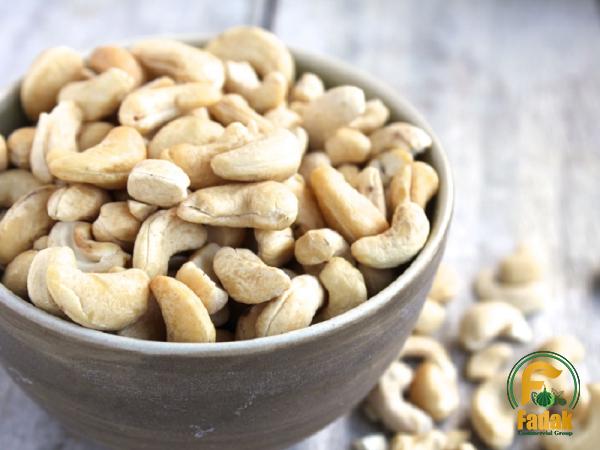 Additionally, the closure of restaurants, hotels, and other foodservice establishments led to a decline in demand for cashew kernels in the food industry. However, the market quickly rebounded as consumers turned to packaged food and snacks for at-home consumption, leading to increased demand for cashew kernels in retail channels. 6. Technological Innovations and Processing Techniques: Technological advancements and processing techniques have significantly improved the efficiency and quality of cashew kernel production. Cashew processing involves several stages, including shelling, drying, peeling, grading, and packaging. Automation has been introduced into these processes, reducing manual labor and increasing productivity. High-speed sorting machines and color-sorting techniques are now utilized to ensure uniformity and remove defective kernels. Furthermore, advancements in packaging techniques, such as vacuum sealing, nitrogen flushing, and resealable packaging, have extended the shelf life of cashew kernels and maintained their freshness and quality. These technological innovations have not only enhanced the efficiency of cashew processing but have also offered extended market opportunities for value-added and ready-to-eat cashew products. 7. Sustainability and Social Responsibility: Sustainability and social responsibility have become integral factors in the cashew kernel industry. Ethical sourcing, fair trade practices, and sustainable farming methods are gaining prominence as consumers prioritize environmental and social impact when making purchasing decisions. Key market players are addressing these concerns by implementing sustainable sourcing policies, supporting farmer cooperatives, and investing in renewable energy and water management practices. Certifications such as Fairtrade and Rainforest Alliance validate companies’ commitment to sustainable practices and help differentiate their products in the market. Additionally, partnerships with non-governmental organizations (NGOs) and initiatives promoting responsible business conduct have become common in the industry, promoting transparency and accountability. 8. Price Trends and Outlook: The cashew kernel market is influenced by various price factors, including crop yields, global supply and demand dynamics, exchange rates, and processing costs. Cashew prices are subject to fluctuations, with volatility impacting both producers and manufacturers. The global market has experienced price increases due to supply chain disruptions, increased demand, and rising input costs. Manufacturers and suppliers are closely monitoring price trends to ensure competitive pricing strategies and maintain profitability. Looking ahead, the cashew kernel market is expected to continue growing steadily. Factors such as increasing health consciousness, rising disposable incomes, and the adoption of cashew kernels in various industries will drive market expansion. However, challenges related to sustainable sourcing, quality control, and price volatility must be carefully managed to sustain growth and meet evolving consumer demands. Conclusion: The cashew kernel market is poised for continuous growth, driven by increasing consumer awareness, rising demand for healthy snacks, and the versatility of cashew kernels in various applications. Key players in the market are focusing on sustainable sourcing practices, product innovation, and expanding distribution channels to cater to evolving consumer preferences and capitalize on emerging markets. With government support, technological advancements, and a growing emphasis on sustainability, the cashew kernel industry is set to flourish in the coming years.
Additionally, the closure of restaurants, hotels, and other foodservice establishments led to a decline in demand for cashew kernels in the food industry. However, the market quickly rebounded as consumers turned to packaged food and snacks for at-home consumption, leading to increased demand for cashew kernels in retail channels. 6. Technological Innovations and Processing Techniques: Technological advancements and processing techniques have significantly improved the efficiency and quality of cashew kernel production. Cashew processing involves several stages, including shelling, drying, peeling, grading, and packaging. Automation has been introduced into these processes, reducing manual labor and increasing productivity. High-speed sorting machines and color-sorting techniques are now utilized to ensure uniformity and remove defective kernels. Furthermore, advancements in packaging techniques, such as vacuum sealing, nitrogen flushing, and resealable packaging, have extended the shelf life of cashew kernels and maintained their freshness and quality. These technological innovations have not only enhanced the efficiency of cashew processing but have also offered extended market opportunities for value-added and ready-to-eat cashew products. 7. Sustainability and Social Responsibility: Sustainability and social responsibility have become integral factors in the cashew kernel industry. Ethical sourcing, fair trade practices, and sustainable farming methods are gaining prominence as consumers prioritize environmental and social impact when making purchasing decisions. Key market players are addressing these concerns by implementing sustainable sourcing policies, supporting farmer cooperatives, and investing in renewable energy and water management practices. Certifications such as Fairtrade and Rainforest Alliance validate companies’ commitment to sustainable practices and help differentiate their products in the market. Additionally, partnerships with non-governmental organizations (NGOs) and initiatives promoting responsible business conduct have become common in the industry, promoting transparency and accountability. 8. Price Trends and Outlook: The cashew kernel market is influenced by various price factors, including crop yields, global supply and demand dynamics, exchange rates, and processing costs. Cashew prices are subject to fluctuations, with volatility impacting both producers and manufacturers. The global market has experienced price increases due to supply chain disruptions, increased demand, and rising input costs. Manufacturers and suppliers are closely monitoring price trends to ensure competitive pricing strategies and maintain profitability. Looking ahead, the cashew kernel market is expected to continue growing steadily. Factors such as increasing health consciousness, rising disposable incomes, and the adoption of cashew kernels in various industries will drive market expansion. However, challenges related to sustainable sourcing, quality control, and price volatility must be carefully managed to sustain growth and meet evolving consumer demands. Conclusion: The cashew kernel market is poised for continuous growth, driven by increasing consumer awareness, rising demand for healthy snacks, and the versatility of cashew kernels in various applications. Key players in the market are focusing on sustainable sourcing practices, product innovation, and expanding distribution channels to cater to evolving consumer preferences and capitalize on emerging markets. With government support, technological advancements, and a growing emphasis on sustainability, the cashew kernel industry is set to flourish in the coming years.
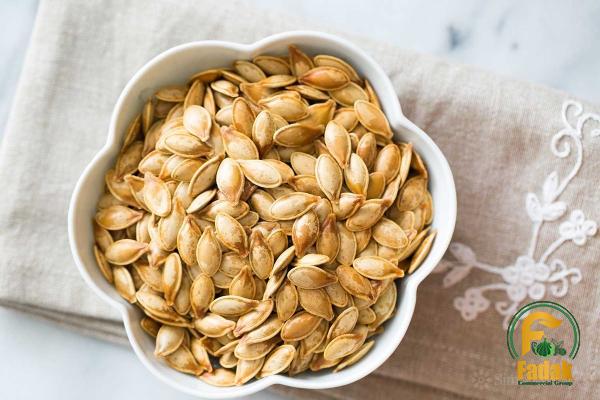
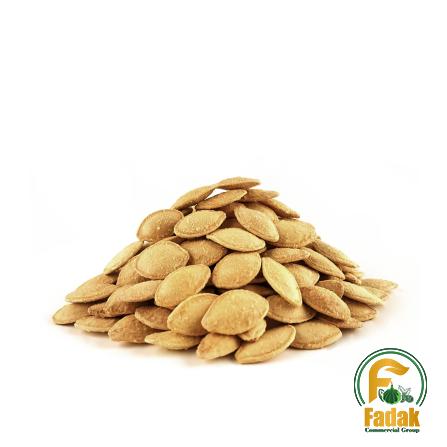

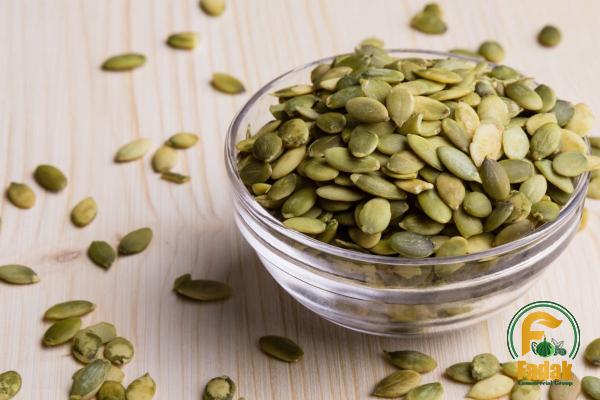
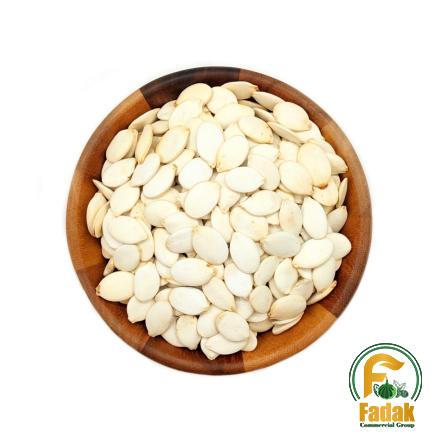
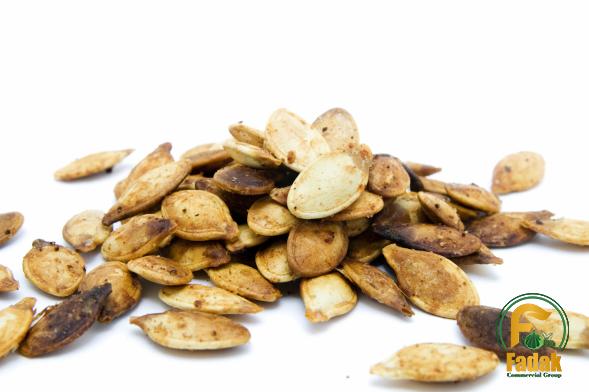
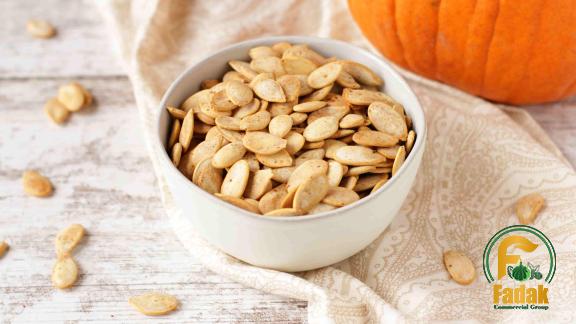
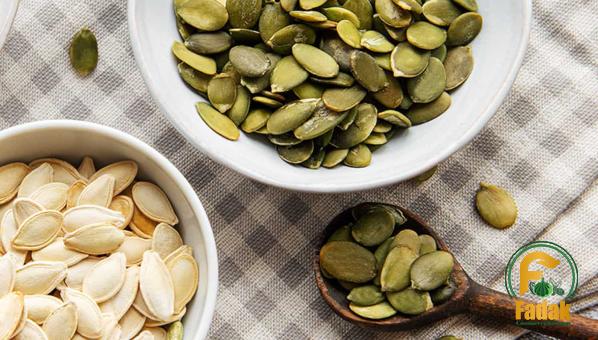


Your comment submitted.